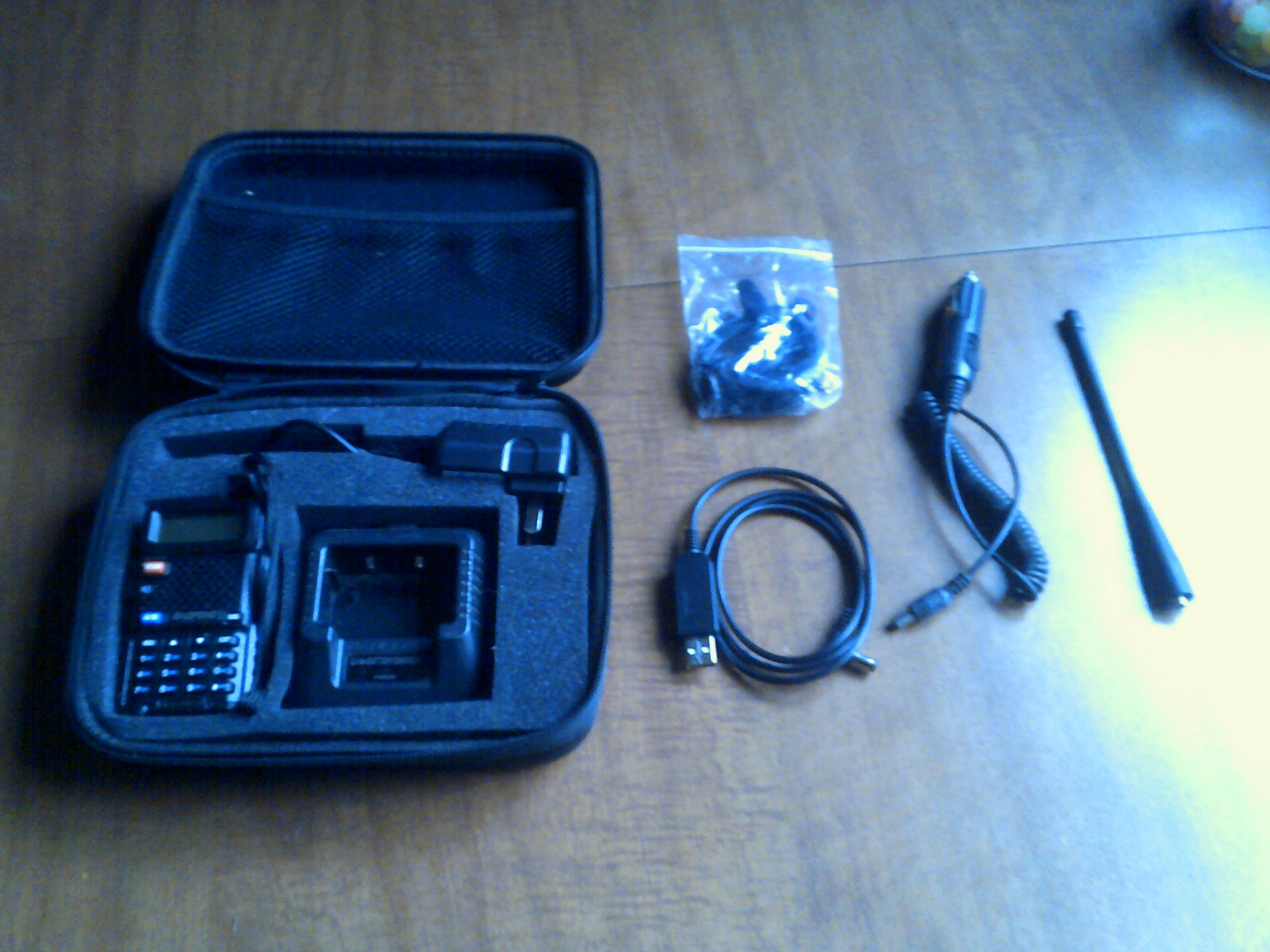Local comms are an important part of my personal preps. Here I am going to do a show and tell of two kits I have prepared for very different reasons.
The first is just a small kit for the wife which can be taken with her should we have to bug out in separate vehicles, or need to meet up at a rally point.
The second is my 2m/70cm go kit, which is my go to kit for emergency service activation, or even for taking along with me on vacation or when we head to one of our BOLs.
For the wife:

In the case is a UV5R which is kept fully charged and programmed with FRS/GMRS, NOAA, Local Police and Fire Dept. frequencies as well as a number of predetermined frequencies we have decided to use in case of SHTF. There are both VHF and UHF frequencies for general home & neighborhood use as well as another set of frequencies we have set up for any tactical use. Also in the case is a charging base and AC power cord.
Beside the case, there is a stock antenna, 12VDC automotive power cord, a USB power cord, and the stock earpiece/mic.
With this kit, she can contact me using our home or tactical frequencies as well as monitor FRS/GMRS, NOAA, and local emergency services.

As an accredited partner in Quebec’s Civil Security Organization, I need to keep a go kit ready for emergency deployment. On the outside of the bag is a UV5R that is kept fully charged and programmed with everything described in the wife’s kit as well as repeaters, both local and in various regions that I visit often or am likely to find myself in. Also on the outside of the bag is an LED flashlight, a paracord bracelet with a compass, and a small measuring tape. These last two items are helpful for building and orienting HF antennas should the need arise.
Beside the bag in the square case is a small folding solar panel and an assortment of USB adaptors for charging various electronics. Below that in the rectangular case is an autoranging digital multimeter for troubleshooting. Below that is a notebook and pen for notes.
Next is a Surecom SWR/Power meter with a ziplock bag full of various adaptors and connectors. Below that is a USB drive loaded with FLDigi, CHIRP programming software, my personal programming images, and a complete set of Firmware image files for UV5R and other radios in case someone (or me for that matter) unintentionally overwrites their firmware. This can happen when using older versions of CHIRP and will brick a radio making it useless. The CHIRP software is updated regularly. Additionally, there is a small roll of duct tape and a small multibit screwdriver.
The Bags:
Power Bag – AC power cord, 12VDC power cord, USB power cord for various charging options.
Battery Bag – 3800mah extended battery pack and 12VDC battery eliminator.
Mic Bag – stock earpiece/mic and a Baofeng handheld speaker/mic.
Antenna bag – extra stock antenna, roll up slim jim antenna, mag mount dual band antenna, 2 x 10 foot SMA extension cables.
I also keep the prototype PR-Digi digital mode module for using FLDigi and a USB programming cable, and of course a charging base. My Emergency Communication Operator Photo ID is also in the kit, but not shown in the photo.
These kits are local comms only as they are both VHF/UHF kits. HF comms are a whole other topic and much more complicated that what these kits are designed for.

